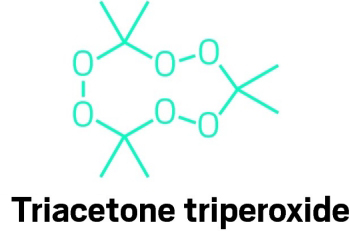Advertisement
Grab your lab coat. Let's get started
Welcome!
Welcome!
Create an account below to get 6 C&EN articles per month, receive newsletters and more - all free.
It seems this is your first time logging in online. Please enter the following information to continue.
As an ACS member you automatically get access to this site. All we need is few more details to create your reading experience.
Not you? Sign in with a different account.
Not you? Sign in with a different account.
ERROR 1
ERROR 1
ERROR 2
ERROR 2
ERROR 2
ERROR 2
ERROR 2
Password and Confirm password must match.
If you have an ACS member number, please enter it here so we can link this account to your membership. (optional)
ERROR 2
ACS values your privacy. By submitting your information, you are gaining access to C&EN and subscribing to our weekly newsletter. We use the information you provide to make your reading experience better, and we will never sell your data to third party members.
Environment
Plot To Blow Up Airliners Foiled
Expert speculates on the liquid explosives that could have been used
by Lois R. Ember
August 10, 2006
| A version of this story appeared in
Volume 84, Issue 33
A terrorist plot to simultaneously blow up several U.S.-bound aircraft with liquid explosives smuggled onboard in carry-on luggage was thwarted by British authorities today. Homeland Security Secretary Michael Chertoff said the terrorists planned to use liquid explosives masked as beverages or other common products that could possibly be mixed onboard and detonated by electronic devices such as cell phones or iPods.
British and U.S. authorities have not released the name of the likely explosive and may never do so for obvious reasons, terrorism expert Neil C. Livingstone tells C&EN. Livingstone is CEO of Global Options, a security firm, and a lead expert witness in the Sept. 11, 2001, hijacking cases.
Livingstone speculates that the bomb could have been a two- or three-ingredient explosive, nitroglycerin (a colorless, odorless, oily liquid that's highly soluble in many common solvents), or PETN (pentaerythritol tetranitrate), also known as Penthrite, which is quite soluble in acetone. Other experts suggest that peroxide-based explosives may have been possible candidates.
Airports have become shopping malls, Livingstone says. "It is possible to build at least an incendiary device with chemicals and batteries that can be purchased in drugstores in the secure areas of airports."
Livingstone says he knows of only one aircraft—South Korea's KAL Flight 858—that has ever been brought down by a liquid explosive device. Authorities believe the liquid explosive disguised as a wine bottle was placed onboard the 1987 flight by agents of North Korea. More than 100 people perished.
In 1995, authorities foiled a plot by Ramzi A. Yousef, an early jihadist with links to al Qaeda and its captured leader Khalid Shaikh Mohammed, to simultaneously blow up 12 U.S.-bound aircraft over the Pacific Ocean.
Then, the explosive, nitroglycerin, was to be hidden in contact lens solution bottles that were to be detonated by digital watches. Yousef, whom Livingstone recalls as the mastermind of the first World Trade Center attack in 1993, hatched his plan in a Manila apartment. The plan was discovered when the plotters started a small chemical fire in the apartment.
Authorities speculate that al Qaeda may have resurrected the Yousef plan for this week's thwarted terrorist attacks.








Join the conversation
Contact the reporter
Submit a Letter to the Editor for publication
Engage with us on Twitter